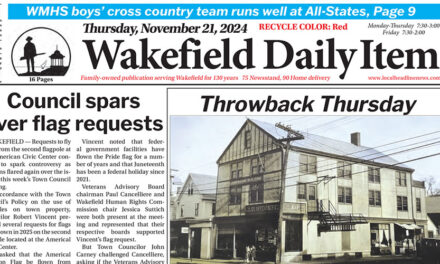Published in the July 8, 2021 edition.
By MARK SARDELLA
Remember all the way back to last week, when we had a four-day heat wave?
I realize that the return to winter weather over the July Fourth weekend tends to blunt the memory of what came before. But three of those days, June 28, 29 and 30, brought temperatures of between 97 and 100, coupled with high humidity.
Did you run your air-conditioning during those days? Of course you did. So did everyone else. Fool not to. That’s what’s known as “peak demand” in the energy industry, a period in which electrical power is expected to be provided for a sustained period at a level significantly higher than the average supply.
The reason the electrical grid is able to provide that extra power during peak demand periods is because it has the capacity to ramp up to meet that extra demand due to reliable electricity generation powered by fossil fuels.
But, if certain green activists have their way, there’s a very good chance there won’t be the capacity to provide that energy in the future. We could very well find ourselves facing life-threatening energy shortages like Texas and California have experienced during period periods of extreme heat.
The Massachusetts Wholesale Municipal Energy Company, (MMWEC) is a non-profit, public corporation made up of 21 municipally owned power companies, including Wakefield’s own WMGLD. In order to fulfill its members’ obligation to meet peak energy capacity needs, MMWEC would like to place a capacity plant on the site of Peabody’s Municipal Power Plant. The proposed gas-fired capacity plant, known as Project 2015A, would run only an estimated 239 hours a year, during times of peak energy consumption like we experienced last week.
But despite the fact that the proposed state-of-the-art plant would only run only during times of peak energy demand and would replace older, dirtier plants now supplying that peak demand, environmental activists oppose any plan that includes burning even a molecule of fossil fuels anytime, anywhere, for any reason.
Scores of them from around the region descended on an informational session held by MMWEC at the Peabody Senior Center on June 22 and turned the meeting into a forum for green activists who object to any plan that involves burning fossil fuels to generate any amount of electricity. (I hope the Senior Center was equipped with bike racks and electric vehicle chargers. Otherwise, see you in court, old timer.)
To hear the greens speak that night, you’d think they were addressing those capitalist pigs from National Grid or Eversource, instead of their own elected commissioners and other representatives of publicly-owned and operated municipal power companies in their own communities.
First, they complained that MMWEC had not been forthcoming enough with information about Project 2015A. Then they proceeded to criticize MMWEC officials for taking too much time at the meeting to explain the project.
You have to understand — these are not middle of the road moderates interested in coming to a resolution that works for the greater good of all. These people would call the Environmental Police on dear old Dad for sparking up the grill on the Fourth of July.
And so what if granny roasts to death in her fifth-floor walkup because there isn’t enough energy to run her air conditioner? They’ve got a whole planet to save. They’re on a mission to stop any non-renewable energy plants or pipelines, regardless of need or cost to the ratepayers.
A big reason that a reliability resource like Project 2015A is needed in the first place is because climate activists have forced the power companies to layer more and more ‘renewable’ energy sources into the mix. Sorry, but wind and solar can’t even fully meet our everyday energy needs, never mind a peak event like we had last week. And they are unlikely to be able to provide that capacity for decades to come, if ever.
Among those who spoke at the Peabody meeting were Wakefield Town Council Chair Julie Smith-Galvin and other members of “Breathe Clean North Shore,” a group formed for the express purpose of opposing Project 2015A. When it comes to saving the planet, truth is optional. MMWEC officials have made it clear that, as a reserve power resource, Project 2015A will emit about 7,085 tons of CO2 per year. But go on Breathe Clean North Shore’s web site and you’ll find the claim that the plant will spew “up to 51,000 tons of CO2 per year.”
The Breathe Clean North Shore web site also states that the proposed plant would be “within a half-mile of two environmental justice communities,” whatever that means.
Showings like the one in Peabody a couple of weeks ago are anything but spontaneous. It was a well-orchestrated performance designed to give the impression of widespread public opposition to Project 2015A.
But the 24 activists who spoke that night in opposition to Project 2015A are not representative of the 180,000 rank and file customers in MMWEC communities who understand that burning fossil fuels for 239 hours a year to keep the lights on and the AC running isn’t going to melt the polar ice caps.
It’s like so many other aspects of life in 2021. Advocates have learned that most people are too busy or too apathetic to engage in issues. So, all they have to do is organize a small number of vocal individuals and they can exert an influence out of all proportion to their numbers.
But municipal power companies shouldn’t be fooled into thinking that their normal customer base shares the views of the few dozen fanatics who showed up in Peabody last month.




